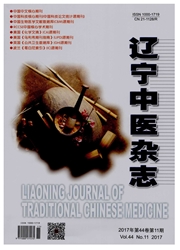

 中文摘要:
中文摘要:
文章就《类经图翼》的灸法特点作了浅述。书中总结了灸法的要则、罗列了禁灸腧穴、汇集了诸多灸法验方。其灸法内容丰富,就施灸方法而言,有直接灸和间接灸。直接灸一般炷如麦粒,其包括化脓灸,或在病变局部直接施灸;间接灸包括隔蒜灸、隔盐灸、隔药饼灸、隔附子饼灸、隔姜灸、隔癞虾蟆灸等灸法,用于多种病证治疗。就施灸时机而言,临床宜根据疾病进程、时机而实施灸治。在灸治壮数上强调临证变通。另可根据灸后反应来识别患者病情深浅,判断灸治预后。《类经图翼》对明代以前艾灸疗法的整理、总结和运用,对于后世灸法的继承和发展都有着十分重要的参考价值和指导意义。
 英文摘要:
英文摘要:
This article was to analyze the characteristics of moxibustion therapy recorded in Leijing Tuyi (Illustrated Supplement of the Classified Carton). In this book, it summarizs the major principles of moxibustion, displays the aeupoints which are contraindicated to moxibustion therapy, and collected various formulae of moxibustion. It is rich in contents related to moxibustion, including direct and indirect moxibustion methods. Direct moxibustion is usually applied by using a wheat-like moxa cone, cover- ing purulent moxibustion, or moxibustion applied directly to the diseased area. Indirect moxibustion, including moxibustion partitioned by garlic, salt, herbs, Fuzi (Radix Aconiti Praeparata)cake, ginger and toad, which can be used in treating a variety of medical conditions. To talk about moxibustion time, it should depend on the development of the disease. The quantity is flexible and should be decided by the condition. The reaction of the patients to moxibustion can be used to judge the severity of disease and to make prognosis. Leijing Tuyi ( Illustrated Supplement of the Classified Canon ) organized, summarized and adapted the moxibustion methods before Ming dynasty,which has high reference value and guiding significance in inheriting and developing moxibustion therapy.
 同期刊论文项目
同期刊论文项目
 同项目期刊论文
同项目期刊论文
 期刊信息
期刊信息
